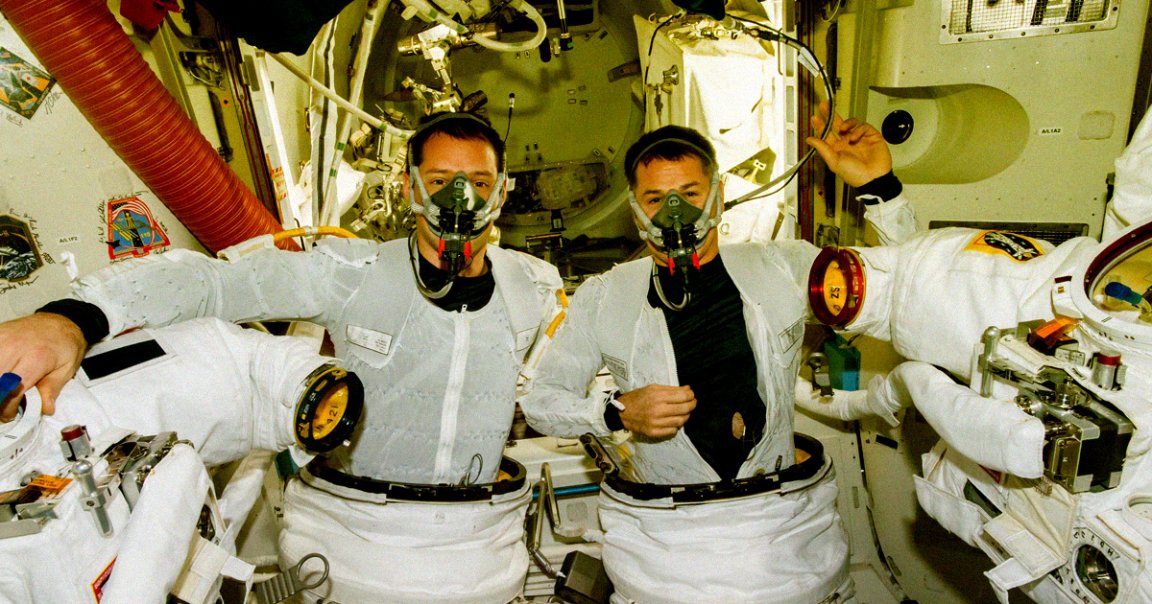
Scientists at the European Space Agency are trying to make shared and frequently-worn spacesuits less gross for astronauts on the International Space Station.
Astronauts going on a space walk outside of the station have to wear several layers of protective clothing, including a disposable Maximum Absorbency Garment diaper, another pair of undergarments, and a liquid- and air-cooled garment.
But sharing these External Mobility Unit suits can get pretty nasty. Reuse means crews are exposed to some gross residue left there by other crew members.
“Hygiene is always a concern aboard the International Space Station,” said ESA life support specialist Christophe Lasseur in a statement. “Astronauts wear their clothes on alternating days then eventually they are disposed of — burnt up inside reentering spacecraft.”
“But there are some items and surfaces which have to be shared,” he added.
Grody underwear may not be a huge issue back on Earth. But in space, it’s not a simple matter of running a wash.
“Spaceflight textiles, especially when subject to biological contamination — for example, spacesuit underwear — may pose both engineering and medical risks during long duration flights,” said ESA material engineer Malgorzata Holynska.
Holynska and her colleagues are trying to come up with special materials that could nix any remaining nasties.
“We are already investigating candidate materials for outer spacesuit layers so this early technology development project is a useful complement, looking into small bacteria-killing molecules that may be useful for all kinds of spaceflight textiles, including spacesuit interiors,” she said.
A team at the Austrian Space Forum are looking to find a way to mimic the antimicrobial qualities of materials such as copper or silver, but without running the risk of provoking skin irritation or tarnishing over time.
“To provide an alternative, we are collaborating with the Vienna Textile Lab,” said Seda Özdemir-Fritz Bacterma, project scientist at the Austrian Space Forum.
Anther potential solution may sound counterintuitive: fight bacteria with bacteria.
“They have exclusive access to a unique bacteriographic collection,” Özdemir-Fritz Bacterma said. “Those microorganisms produce so-called secondary metabolites. These compounds are typically colorful, and some exhibit versatile properties: antimicrobial, antiviral and antifungal.”
The scientists are now exposing test materials to space-like conditions, including plenty of radiation — as well as simulated lunar dust, since astronauts may soon be returning back to the surface of the Moon.
Perhaps then, astronauts can rest assured they won’t be swapping germs by sharing spacesuits.
READ MORE: How to keep spacesuit ‘underwear’ clean? [European Space Agency]
More on astronaut life: So, Uh, Astronauts Routinely Smuggle Booze Into Space